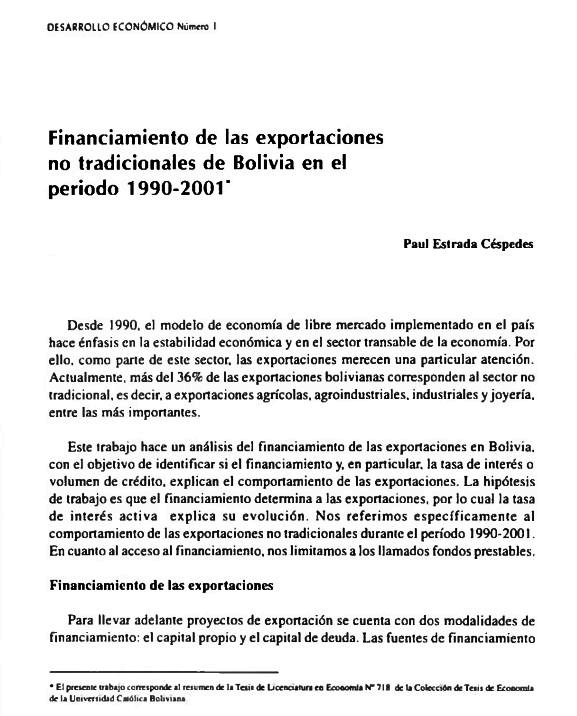Financing of non-traditional exports of Bolivia in the period 1990-2001
DOI:
https://doi.org/10.35319/lajed.20031343Keywords:
Free Market, Economic Stability, ExportsAbstract
Since 1990, the model of free market economy implemented in the country emphasizes economic stability and the tradable sector of the economy. Therefore, as part of this sector, exports deserve particular attention. Currently, more than 36% of Bolivian exports correspond to the non-traditional sector, that is, to agricultural, agroindustrial, industrial and jewelery exports, among the most important.
This paper analyzes the financing of exports in Bolivia, with the objective of identifying whether financing and, in particular, the interest rate or credit volume, explain the behavior of exports. The working hypothesis is that financing determines exports, which is why the active interest rate explains its evolution. We refer specifically to the behavior of non-traditional exports during the period 1990-2001. Regarding access to financing, we limit ourselves to the so-called loanable funds.
Downloads






